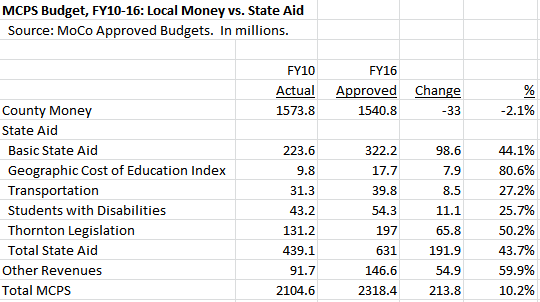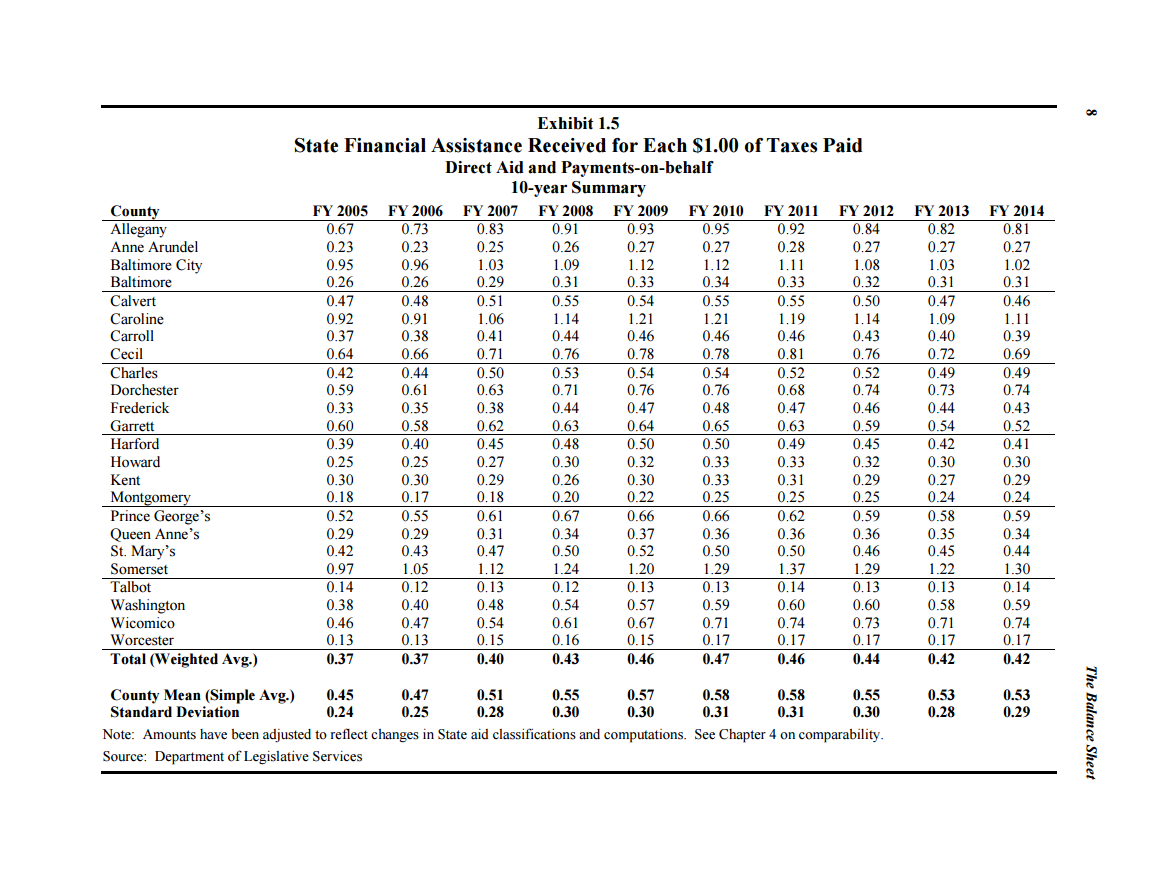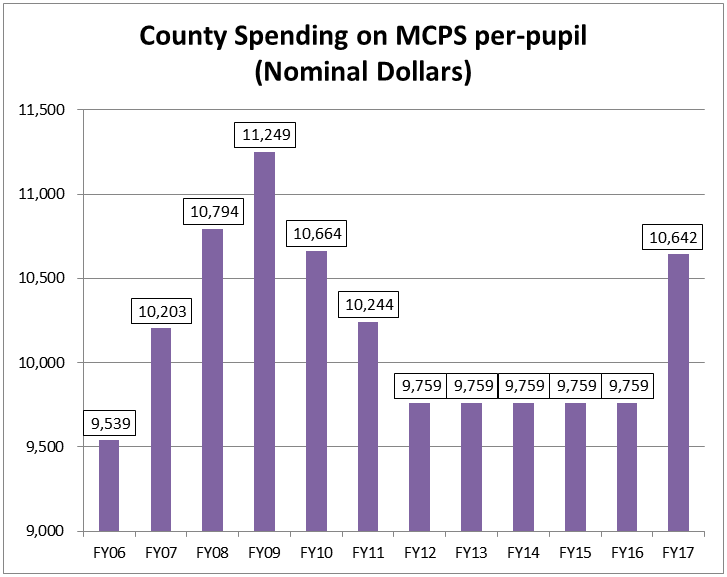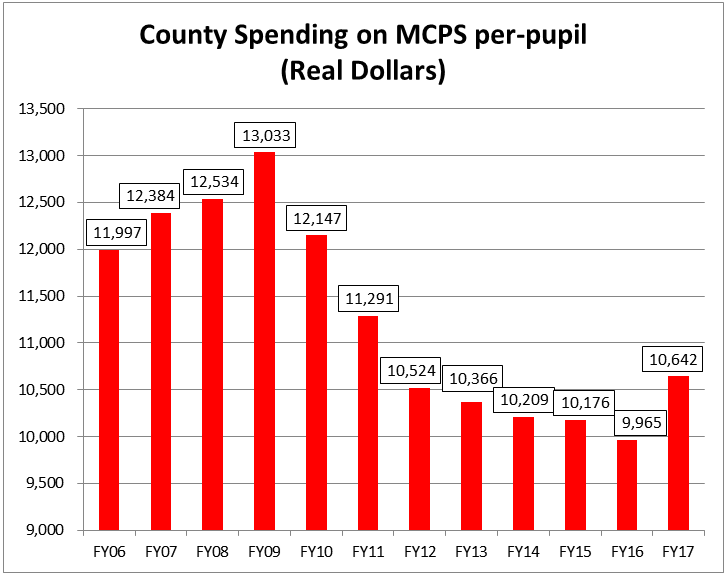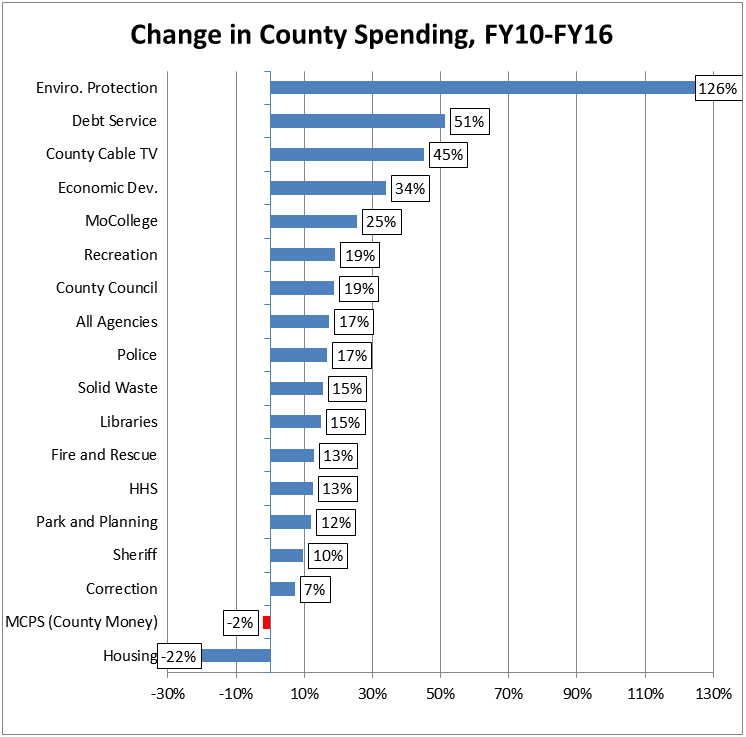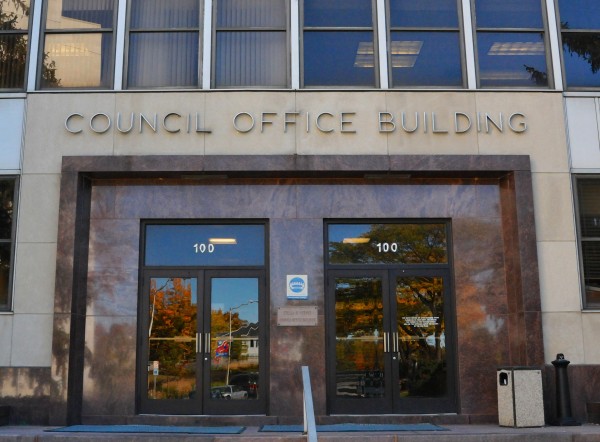By Adam Pagnucco.
Word has reached Seventh State that the governing establishment in Rockville is displeased with our recent post on MCPS funding, questioning whether our data is accurate. Let’s establish the data’s presence in the public record.
The assertion in our post generating the most unhappiness is that the county cut local support for MCPS while it gave most other functions of government double digit increases over the FY10-16 period. Local funding for MCPS can be found in the County Executive’s recommended budget. The table excerpted below shows a $33 million cut in local funding for MCPS between FY10 and FY16. That happened at the same time that enrollment grew from 140,500 to 156,514, an 11% increase. Another item of interest is how dependent the county is now becoming on state aid for school operating funds. For much of the 1980s and 1990s, at least 80% of MCPS’s operating budget was financed with local funds. Now, the local share is down to roughly two-thirds.
As for the other departments and agencies, actual funding for FY10 can be found here and approved funding for FY16 can be found here. Those data points, along with the MCPS local funding history above, are assembled in the table below which shows how much of an outlier MCPS was during the FY10-16 period. Three notes. The Department of Environmental Protection’s big increase is due to a hike in the water quality protection charge, which is used to finance stormwater projects mandated by the state. It does not reflect a significantly greater draw on property tax revenues. The Department of Housing and Community Affairs’ budget drop reflects a significant one-time expenditure for the Housing Investment Fund in FY10. It does not illustrate a slash in the department’s operating activities. The Department of Transportation’s operating budget is not included in this data because it was subject to departmental restructuring in FY11, preventing an apples-to-apples comparison.
Data on the county’s local per pupil contribution to MCPS can be found in this Office of Legislative Oversight report appendix and in County Council budget packets like this one. This information was the basis of our statements that the county cut per pupil local funding for three straight years and froze it for four straight years, as illustrated by charts we published a year ago. The Maryland State Department of Education’s Fact Books are our source for the actions of other counties after the Maintenance of Effort (MOE) law was changed. During the first three years of the new MOE law, most other counties – including ones controlled by Republicans – increased their local per pupil contributions while Montgomery County did not.
Let’s be fair. There is an intellectually honest argument to explain these actions. Here’s a statement from Hypothetical Council Member X, who has decided to level with constituents about the county’s history of funding public schools.
Yes, we cut MCPS during the Great Recession. We had to. Our reserves were being drained to zero and we were about to lose our bond rating. We were raising the energy tax, breaking our collective bargaining agreements, furloughing county employees and laying some of them off. State law prevented us from cutting MCPS like the other agencies, so we did what we had to do. The state also shifted a portion of its responsibility for paying teacher pensions down to the counties and now we are paying $60 million a year for that. But it’s true that we squeezed MCPS longer and harder than any other part of county government and that was a mistake. We tried to reverse that with the 9% property tax hike. Going forward, we should give MCPS small and steady increases so we don’t run into problems with our schools again and we will pay for it by restraining growth in the rest of the government.
There’s a reason why intellectually honest arguments are not often used in politics: they are not pretty! But it’s time to be honest about where we have been and where we are headed. That SHOULD be what the next election is about.
One more thing. The establishment may choose to respond with a guest blog. We welcome fact-based debate. But we caution anyone who responds that they must acknowledge and address the data we present here that appears in the county’s own budget documents. Failure to do so will be perceived as political pap and puffery by Seventh State’s discerning readers.




